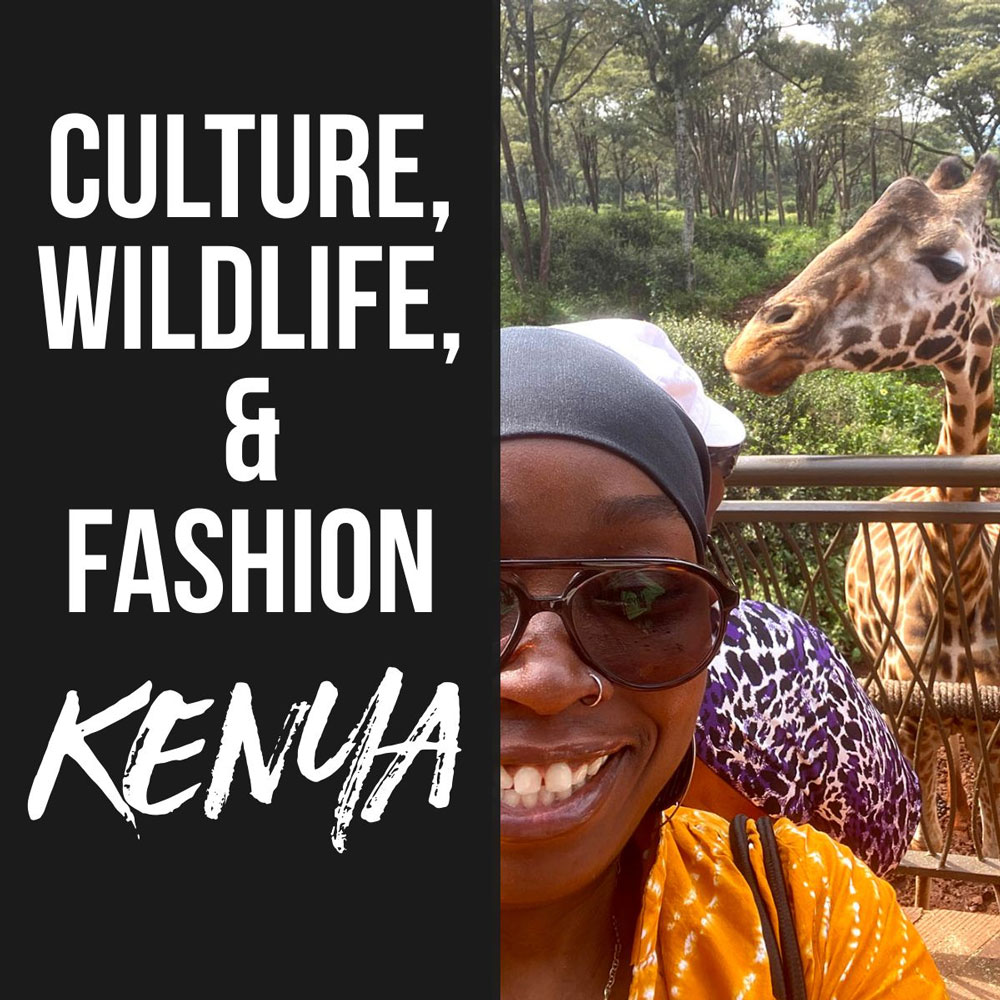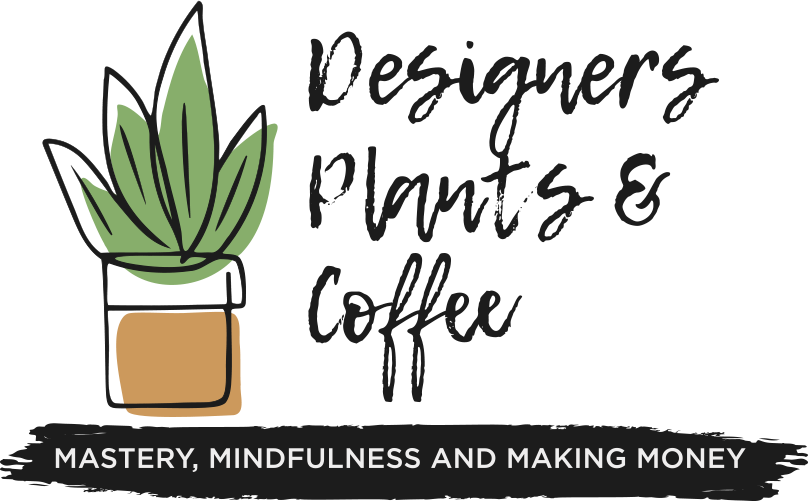

In this episode, we’re diving into the amazing experiences and cool contrasts of Kenya. we’ll chat about the mix of traditional and modern vibes in fashion, the jaw-dropping wildlife during the great migration, and some seriously delicious food.
Key Highlights:
Conclusion:
Looking back on my trip, I’ve got a real appreciation for Kenya’s rich culture, stunning wildlife, and all the exciting new industries emerging. I can’t wait to go back and explore more of Mombasa and Nairobi while soaking up all the changes in this vibrant country.
We want to hear from you! If this episode inspired you in anyway take a screen shot of you listening on your device and post it to your Instagram stories and tag us, @designersplantsandcoffee
Links:
Free Cover Me Chic Kimono pattern: https://covermechic.com
Purchase the fabric: https://covermechic.com/textiles
Welcome to the Designers Plants & Coffee podcast, where we discuss how to succeed as a designer while staying true to yourself, finding peace in the process, and making money doing what we love. Subscribe on YouTube and wherever you get your podcast.
What was the major highlight of your trip to Kenya?
The major highlight was definitely Masai Mara, which was a safari. We went during peak season, so the great migration was happening. So we saw thousands and thousands of animals.
So you saw all of my spirit animals, which is awesome. How is fashion in Kenya?
Honestly, because of the globalization, it’s the same. Of course, New York, everybody has on Jordans and all of that, the high fashion stuff. When I was there 20 years ago, I can say that it was a lot different. It wasn’t as developed, but there are buildings going up everywhere. In terms of fashion, when we went further out and we saw the Maasai, they have a distinct way of dressing, the ones that are still in the village and stuff like that. But the Maasai that were working at Maasai Mara looked like everyone else. And I mean, just a quick story, when we were at Maasai Mara, the villas were actually inside Maasai Mara. They had a compound within. At night, when we went back to our villa, they had Maasai escort us. My husband said, Why do you have to escort us? I was like, Oh, the hyenas. It was a very interesting and fun trip.
In Ghana, they wear modern silhouettes, but they’re using traditional African prints. Did find that a lot in Kenya?
In Nairobi, it was strictly like if you’re walking in the street in New York. On the outskirts, you saw more of the development happening, but honestly, there was not a lot of African print. A lot of that is coming from West Africa because even I wanted to go shopping for a fabric, and you look at the label, most of it came from West Africa. It wasn’t native to East Africa. So the biggest thing over there were the the blankets from the Messiah. And a lot of that was the plaz, the reds, and stuff like that. And that it was wool because it gets really cold at night, and we went over there during the rainy season. So it was like, what, 70, 65 degrees?
How was the food? Did you eat any traditional foods? Were you adventurous?
I’m very conservative when it comes to food. Coffee is amazing. Okay, I did bring back some from Naima. I haven’t sent it out to you yet. We were blessed to have a personal chef. So we had a chef. I’m telling you, the food was amazing. It was great. Yeah, it was nice. When we were in Nairobi, We had a chef. When we were in Masai Mara, it’s all-inclusive, so they have food so you can choose from, which is also very good. When we were in Mumbasa, we had a personal chef. We had native food. It was a lot of samosa, which is good. They make the rice and the chicken. I can’t even remember everything, but every meal that I had was delicious. And the food is so fresh.
In America, we tend to put meat in everything. So there’s meat in the beans, there’s in the greens. They don’t use a lot of meat, right?
They do eat a lot of meat. They do, because they are not close to the Coast. In Mumbasa, there’s more seafood. But actually in Nairobi and Mumbasa, they eat more meat because that’s more rarely available. They do a lot of farming of herding, and stuff like that. That’s a big part of their diet. Most of it is based around the beef, the lamb, and the chicken.
Now, were the chicken skinny? Because the chickens in Ghana are very thin.
Yes. And we were speaking to to the chef about that, and we were like, Compared to the United States, the chickens here are huge, and that’s because it’s what they feed them. But in there, they can’t sell chickens above a certain weight. People don’t buy it. They don’t buy it because it’s not healthy. No, it’s not natural. So the chicken sizes are normal size compared to what we do. It’s like half the size.
Right. It’s what chickens are supposed to look like. Exactly.
When we were growing up, chickens were a lot smaller.
They were normal size chicken, not pumped with steroids. Any other highlights that you want us to know?
When I was in that role, we went to a bead factory, but it was basically started so that single mothers or women with some type of difficulty had a place to work. All of the bees were handmade. That was a really good highlight because you saw the artisanship and the entrepreneurship and just the creativity of it. And they sell their bees all over the world because Zuri, I think that’s how How do you pronounce it, Kuzuri Beads. Of course, that was in Nairobi. And Masamara, of course, was the safari. We got, I would say, maybe five feet from not elephants, lions. And the only time we actually had to be quiet was when we came up on a leopard because they can jump on the truck. It’s so rare to be able to see a leopard, and we were blessed to be able to see one. We saw a cheetah, which was also very rare. We saw the big five except for the rhino, so we didn’t get a chance to see that. But everything else, it was just amazing. So the last place we went was Mumbasa, which is on the Coast. And I did get my feet into the Indian Ocean.
I didn’t go in because the water’s rough.
If you had to go back to choose, which place would you go back to?
I would go every place for a different reason. So it’s like I would go back to everything. So Mumbasa, I would definitely go back because it’s chill. It’s more like a resort town. We didn’t spend enough time in Mumbasa because we were running around with Nairobi and then safari, whatever. Mumbasa, but we were right by the beach. We saw the beach from our room. It was just chill. I would go there again for a vacation and not go any further. I would like to have gone because last time I went, we went to the Old Town. I didn’t get a chance to do that because we didn’t stay that long. But that’s Mumbasa. I would definitely go back. Safari because it’s safari. Nairobi, I would go back because of the development, because of the speed of development there. If you were to pick a place to go and do business, I would go back to Nairobi. Did you buy any fabric? I did. That’s when I discovered most of the fabric that they had was from West Africa, and the prices were ridiculous. When I went there, I saw something that was like a nice wax print.
It was beautiful. They said 431 US dollars for six yards. I was like, Listen, I live in New York, and I can go to 116th Street and get six yards for $20. That’s on a high end. But I got this at the my site market. I am having patterns Coming up with the Cover Me Chic brand, so we’ve been working on that. So I’ll be making something with that.
What about factories? Being used more? Now, really, since you said that’s where the business was.
I did not see any factories. I mean, I’m sure that they have it, but they really don’t have an industry, which is, I think, part of the problem. I mean, coffee is a big industry, of course, because the coffee, like I said, is delicious. Yeah, that’s the biggest export, but they have so much more potential. That’s why I will go back in terms of a business opportunity, because there’s a lot of opportunities for new industries to be developed.
That’s all for now. Thank you for joining us. I’m LaTisha Winston of Keeping You as Stitches, along with Naima Doja of Fearless Threads, and Zahit back from Region Design Lab. And cover me Sheet. See you next time.
Subscribe to our newsletter with stories from our experience in the fashion industry and the best design tips.

We publish bi-weekly on Friday’s at 7am.